Tim Newton Anderson's Blog, page 9
January 4, 2023
Lovin’ Vian
I’ve just finished reading two books related to the great Boris Vian.
The first is one of his two early novels – Vercoquin and the Plankton – published by the wonderful Wakefield Press (one of my favourite publishers). That only leaves three novels still to come out in an English translation – the other early book Trouble in the Swathes, the last Vernon Sullivan novel They Do Not Realise and his posthumous On n’y échappe pas. There are also some of his plays and his poetry.
The novel has all of the Vian trademarks of extravagant wordplay, extraordinary characters, and casual surrealism although it does not have the heart of his best novels. It feels more like the Vernon Sullivan To Hell With the Ugly than Froth on the Daydream. The translation by Terry Bradford is workmanlike but without the instinctive feel for the material Stanley Chapman had in his work on Froth and Heartsnatcher, however I prefer it to the Paul Knoblotch work for TamTam.
Despite its faults, it is thoroughly recommended to anyone who already loves Vian, and if you are new to this fabulous author, start with Froth.
The other book is Left Bank by Agnes Poirier from Bloomsbury. It is a cultural history of Paris during and immediately after its occupation in World War 2 (which is also the period Vercoquin is set in).
The polymath Vian features heavily in the book alongside his friends Jean Paul Sartre and Simone de Beauvoir. As Paris opened up, Vian was a mainstay of the cultural scene on the Left Bank as not only a writer but jazz musician and impresario and the “Surprise Parties” of Vercoquin evolved into the packed cellars of the past war period the way the Zazous evolved.
Poirier’s book fills a gap in the cultural history of the city between the Surrealist and émigré scene in Montparnasse in the 20s and 30s and the 50s and 60s captured in James Campbell’s Paris Interzone and Barry Miles’ The Beat Hotel and as such I find it invaluable.
Anyone interested in how Paris developed and maintained its role as the centre of literary and artistic life should read these books.
December 9, 2022
A pair of Cults
I have to confess to loving cult books and received a couple this year as presents. One of them – Garth Marengi’s Terrortome – is great. The other – Buckaroo Banzai against the World Crime League, is not so much.
Both books started life as other media. Garth Marengi’s Darkplace was a wonderful note perfect spoof of horror writing, 70s TV and many more targets. The recent novel continues that multi layered comedy. Garth Marengi is supposed to be a vainglorious horror writer who has written more books than he has read and wrote, produced and starred in the TV series which was supposed to be too extreme for television. In fact it came across like a mix of Crossroads and pulp horror authors like Guy N Smith. Comedian Matthew Holness penned the Channel Four series based on a successful fringe show at the Edinburgh Festival and starred alongside co writer Richard Ayoade and Matt Berry.
The show worked well on a number of levels of irony and parody and the book continues that including the metafictional concept that Marengi’s hero is a horror writer who buys a cursed typewriter and whose fictional characters then escape into the real world. Like Marengi, the character has no idea of his lack of talent and continually complains about attempts by his editor to censor his “genius” which could change consciousness. The plot’s themselves could easily be those of serious horror novels, but the deliberately bad execution and self referencing make them very funny.
The joke extends to the book itself which only has Holness’ name in small print on the copyright page and everywhere else is attributed to Garth Marengi – including the author’s signature on the special signed edition.
Buckaroo Banzai, by contrast was a big disappointment.
I loved the film and entered into the concept of something deliberately created as a cult movie using the tropes of Doc Savage style SF pulps. This was helped by a brilliant cast. The book of the film was just as good. It was a bit overwritten but was taut enough to work.
The latest volume, on the other hand, is self consciously literary enough to have been written by Garth Marengi. Nothing much happens during the first half apart from back references, exposition, and gratuitous torture scenes to show just how awful the villain is (underlined by his gross physical problems). The spirit of William Burroughs is invoked as well the pulp origins but neither fully materialise.
It could still make a good film by editing down the plot and getting band back together, but like Marengi and his hero, Earl Mac Rusch seems to have ignored any suggestions about editing it.
December 5, 2022
New Stories out for Christmas
I have two more stories out in anthologies for Christmas – one in the anthology Trees and another in Tales of the Shadowmen 19 – Demi Monde . 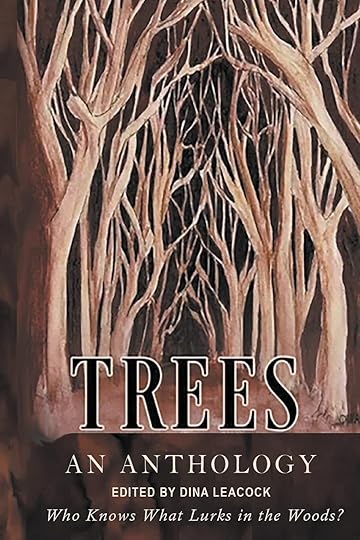
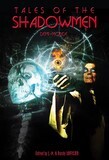
The story in Trees is one of the first stories I wrote a couple of years ago and featured the back story of one of my characters. However this was stripped out for length to leave the core tale of loss and superstition.
The Shadowmen story features a young Carter Dickson alongside Raymond Chandler and PG Wodehouse at Dulwich School. It also gave me the opportunity to include Billy Bunter and an ancestor of Giles from Buffy.
November 19, 2022
The Times New Roman is a changing
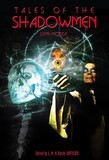
I’ve got a couple of new stories coming out shortly: The Brasher Bat in Tales 0f the Shadowmen 19 – Demi Monde in December and The Portrait of Damian Black in Bewildering Tales 975 (http://www.bewilderingstories.com/). I’ve been proof editing the latter this morning.
Proofing something you wrote a while ago is an interesting experience. Firstly, you notice things you didn’t when you did the first edit because it no longer seems like your story. It was one of the two dozen stories I wrote weekly during lockdown and as a deliberate policy I didn’t do anything on the first edit except sort out typos and obvious grammatical mistakes. Plus change the font and spacing etc when I submitted it to comply with Shunn guidelines. I did a couple of changes at the request of the magazine to make some things clearer, but it’s otherwise an example of my writing style at the time.
It could be argued that I don’t have a single writing style – especially in the lockdown stories where many were prompted by suggestions of genre, location and main character name from friends and the public. I tried to fit the style to the story. However, re-reading it made it clear my style has changed. My writing has got tighter, with less complex sentences. I was tempted to split many of them up in Damian Black, but resisted in order to leave it the way I had originally written. That was what had been accepted.
September 17, 2022
The Game is Afoot
I’m honoured to have a story in the latest set of new Sherlock Holmes stories from MX publishing.
My tale – The Body in Question takes place in the early months of Watson and Holmes’ flat share at Baker Street. Watson has not yet started his private practice and is working in the mortuary at Bart’s Hospital when an unknown body turns up in place of the one expected. As well as exploring the world of Holmes, it gave me the opportunity to look at some of the female pioneers of medicine in a time when they were only supposed to work as nurses not doctors.
There is a kickstarter for the anthology here: https://www.kickstarter.com/projects/mxpublishing/the-mx-book-of-new-sherlock-holmes-stories-xxxiv-to-xxxvi?fbclid=IwAR2CYAdfBot2tEOaM-m42NCbWHDjkCQD5lRfXfc6QhTvySHeGT7-paneO-k. This is not to determine if it will appear, but how much money they will raise for the school for children with special educational needs which is based in Conan Doyle’s old house.
The books are, of course, part of The Game which supposes Holmes and Watson were real people and Conan Doyle simply Watson’s literary agent. Thousands of dedicated fans over the world are members of clubs and many have published scholarly articles explaining seeming discrepancies in the stories. Holmes and Watson are such classic characters that lots of famous authors have tried their hands at pastiches – many of which are published in this series. I have a copy of The Alternative Sherlock Holmes which lists hundreds and there are more in the four volumes of Crossovers by Win Scott Eckert and Sean Lee Levin with many more being published since those volumes were printed.
September 5, 2022
Fall Into Fantasy – Lord Minimus

Apparently, despite my earlier misgivings, Lord Minimus is big enough! The story will appear shortly in the latest edition of Fall Into Fantasy from Cloaked Press: https://www.amazon.com/dp/B0B86QBCW5/.
The story is set in the gaps in the written history of Restoration England and stars the real life characters of Lord Minimus – Sir Jeffrey Hudson – and Lord Marlborough. If the challenges of religious and political turmoil were not enough for the friends who fought side by side for Charles I in the English Civil War, they face a magical threat as well.
Despite his lack of stature, Hudson transcended his role as a part of the Queen’s collection of living oddities and showed his skill on the battlefield and diplomatic missions before being captured by Barbary Pirates and suffering many years in salvery in North Africa. The story tells the tale behind the history and what happened when he returned as Marlborough’s role as a member of the King’s Cabal thrust him into a conspiracy that was deeper than mere sectarian rivalries.
I hope the tale has echoes of the relationship between Fritz Leiber’s Farfhd and the Grey Mouser as well as introducing two characters compelling in their own right. If nothing else, it sits alongside some great authors in this anthology.
August 22, 2022
Alfred Jarry and the Unholy Trinity
I’m very proud to have a story in the latest edition of Black Scat Review – http://Black Scat Review #26; Crime Wave Paperback – August 19, 2022 by Various (Author), Norman Conquest (Editor).
Blacl Scat are one of my favourite publishers along with Atlas Press, Wakefield Press, Black Coat Press and Snuggly Books for their printing of French and other European authors from the Decadents through to the surrealists and beyond.
As well as my own contribution there are stories from Tom Barrett; Margot Block; Norman Conquest; Charles Cros; Robert James Cross; Farewell Debut; Debra Di Blasi; Fernando Fidanza; Larry Fondation; Peter Gambaccini; Eckhard Gerdes; Émile Goudeau; Rhys Hughes; Harold Jaffe; Amy Kurman; Michael Leigh; Martha McCollough; Jim McMenamin; Michael Pollentine; Frank Pulaski; Paul Rosheim; Doug Skinner; Saira Viola; and Tom Whalen.
My own is one of a pair of tales where Alfred Jarry is re-imagined as a psychic detective. In this case he has to find a ghost that has gone missing for a father and son.
July 8, 2022
Two more stories published
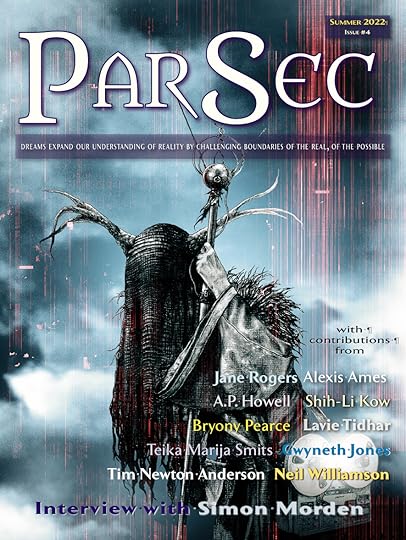
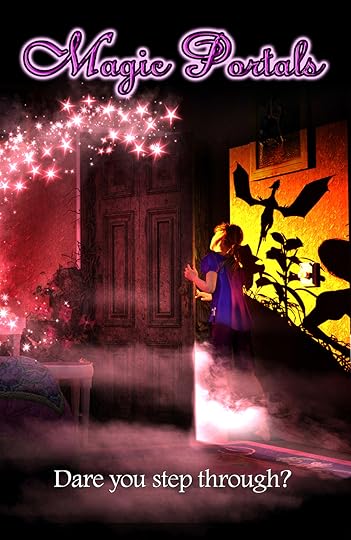
I’m delighted to announce that two new stories of mine are hitting the streets – one in Parsec Magazine which will be published next Friday but is available to pre order here. The other is in the Magic Portals anthology which is available here.
There are also three other stories in the pipeline – one in Dark Lane Books which will be out later in the month, one in the Trees Anthology out late August or early September and the other in a Christmas anthology from TouchPoint press.
It is always amazing to have a story accepted and I am extremely grateful to the editors who have done so. It is also fun to do the revisions – I am always surprised to see what I have written as by that time I have generally forgotten it. I tend to use a different style for each story to suit the genre (although there are always elements that make it a Tim Newton Anderson story) so re-reading them often makes me wonder how I did that.
Now to write some more!
July 4, 2022
Lord Minimus is Too Short
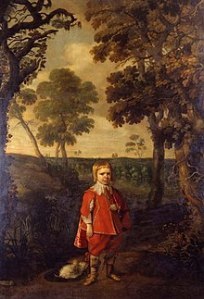
You get all sorts of rejections, from the form ones to the nice ones. The rejections I have had for my story Lord Minimus are very useful ones. While the editors like the characters, setting and writing, they feel it is too short.
This is a little ironic as the main character is himself very short. Lord Minimus – Sir Jeffrey Hudson – was a real person who lived in Restoration England. He was adopted into the menagerie of King Charles I’s wife along with a collection of other exotica that resembled the cast of the Greatest Showman. Short people, tall people, and various animals formed her personal court.
Hudson always tried to avoid being defined by his size, and led troops in the English Civil War and was a diplomat, duellist and extremely intelligent. His life was fascinating including a spell as a kidnap victim of Barbary Pirates, after which he arrived back in England six inches taller. Apparently this is not uncommon for someone with his medical condition, but I ascribe it to more fantastic causes.
The period he lived in was also fascinating as he was around during the aforementioned Civil War, the Great Plague and the Great Fire. His co-hero is Lord Marlborough who was a member of Charles II’s inner Cabal and one of the founders of the Royal Society which numbered Newton and Wren as members and was populated with alchemists as well as scientists. Marlborough managed to navigate the complex politics of the period with the battles between Catholics and Protestants as well as international machinations between Britain, France and Holland in particular.
The stories (I’m waiting on a response to the second one) are my attempt to honour two of my heroes – the secret histories of Tim Powers and the swords and sorcery of Fritz Leiber. The tales exist in the gaps in written history and expose hidden conspiracies, and the relationship between the two heroes echoes the good natured competition of Fafrhd and the Grey Mouser.
The responses I have had so far indicate that I am onto something with the stories, but need to give them enough space to live and breathe rather than writing to length. This will restrict the potential outlets, but make better stories.
June 27, 2022
The Play’s the Thing
I’ve recently done the first draft of a play, which was an interesting process.
The last time I wrote a play was when I was and fearless so I decided to write something based on my own region’s history and the strikebreaking blackleg miners. It was inspired in large part by the wonderful Close the Coalhouse Door – this was before Thatcher closed down coal as an industry and the toxic industrial disputes of the past suddenly came into the present day.
The new play is based on the character my wife Jules and I created for her – the crime solving medium Beryl Crystal. I have previously written a screenplay for Beryl aimed at the Father Brown daytime slot (plus the plots of 40 episodes in case we could get it picked up). We attempted to film it as a pilot but scheduling and arranging locations were a nightmare and we then hit Covid so have shelved that. Instead the idea is to find a local theatre we can put the play on at and I have written it with amateur companies in mind so there are far more female than male characters and the staging is minimal.
I bought a copy of Scrivener some time ago to write in but have never used it to its full potential. The problem I find is that it wants me to do too much in terms of format during the writing process and I have always been a “get it down while you are inspired” person. For me first drafts are always quick, and often pretty close to what I want to achieve. Having to think about format while writing the story gets in the way. What I eventually decided to do with the play was write it in Word with minimal stage directions and ‘says Beryl’ to identify the dialogue and then cut and paste it into the right format on Scrivener. I then compiled and exported it to a Word document to review and identify edits (which I still like to do with pen and paper) which I can then do in Scrivener.
This may seem like a long winded process, and I probably should learn how to use Scrivener properly, but it works for me.



